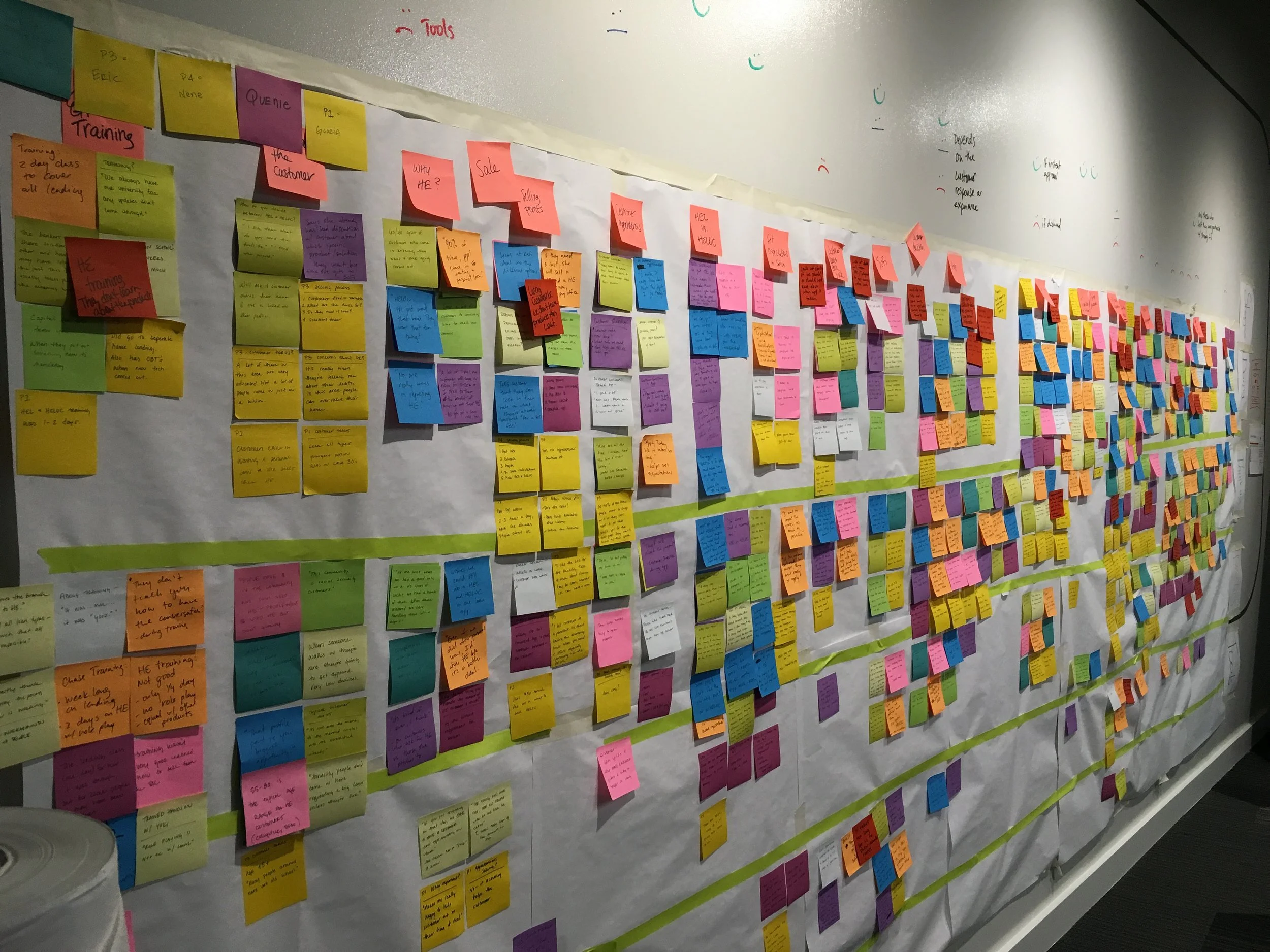Home Equity Process & Application Improvements
Company/ Capital One
Role/ Research Lead & User Experience Designer
Responsibilities
Research/ plan development, execution, analysis and reporting.
Design/ wireframes, defining user requirements, and visual design.
Team/ 1 Product Manager, 1 Sr. User Experience Designer, 1 Research Coordinator
Opportunity/ Capital One faced low engagement from in-branch employees of the home equity product due to dissatisfaction with the existing experience.
Goal/ Understand process and pain points of in-branch employees to increase adoption and sales.
Impact/ Significant reduction in application drop-off leading to three times application conversion.
In-Branch Interviews
Goal/ Understand in-branch employees processes, needs, and pain points.
Participants/ 14 in-branch bank employees across 3 states.
Method/ In-person interviews and contextual inquiry (side-by-sides).
Findings
Inconsistent loan process and communication with underwriting led to duplicative document requests and frustrated in-branch clients.
The existing application, tailored for mortgages, did not meet the specific needs of home equity customers, resulting in poor quality applications.
Branch employees felt inadequately trained to sell complex home equity products and often deferred to simpler options like credit cards.
Research Outcome
A Shared Understanding
I collaborated with several stakeholders to analyze the findings as a team to increase understanding of our users across all roles.
Using the analysis I created personas and journey maps for in-branch employees highlighting their home equity processes and pain points.
In-branch Changes
Using the research outputs Capital One decided to remove home equity from the in-branch product offerings.
Alternatively when clients came into branch they would call to a home equity hot line where specialists could help them.

Our New Direction
Now that in-branch employees had been removed from the home equity process, we changed our direction to an online consumer facing home equity application.
Exploratory Interviews
Goal/ Understand consumer experiences with home equity including their motivations, fears, and application processes.
Participants/ Consumers who had obtained a home equity loan or line of credit in the last 6 months.
Method/ In-person interviews
Findings
Users lacked understanding of home equity and its utilization.
Users sought an easy application process with auto-populated information.
Users were hesitant to provide personal information until they were sure about proceeding with a lender.
“What makes me nervous about going online is getting overwhelmed with real estate jargon I don’t understand.”
Iterative Design
Design Approach
Using our foundational research we collaborated with our product and technology teams to create wireframes for the application. The wireframes would later become high-fidelity designs.
User Testing Approach
Participants/ Consumers who had obtained a home equity loan or line of credit in the last 6 months.
Method/ 2 rounds of in-person moderated user tests.
Findings
Users wanted assurance of information security.
There was an inherent trust in Capital One's offerings, but the options needed education and simplification.
The application should be presented in manageable chunks to avoid overwhelming users.
Final Delivery
A User Centered Approach
Incorporating the usability findings, the final application was adjusted to meet user needs including:
Automating data collection through a secure soft credit pull.
Providing in-application education to inform users of their options.
Close analysis of post launch analytics to identify pain points and adjust in the first two months of launch.
Impact
The new design was a great success with significant reduction in application drop-off leading to three times application conversion. As well as an award from McKinsey & Company for usability.




